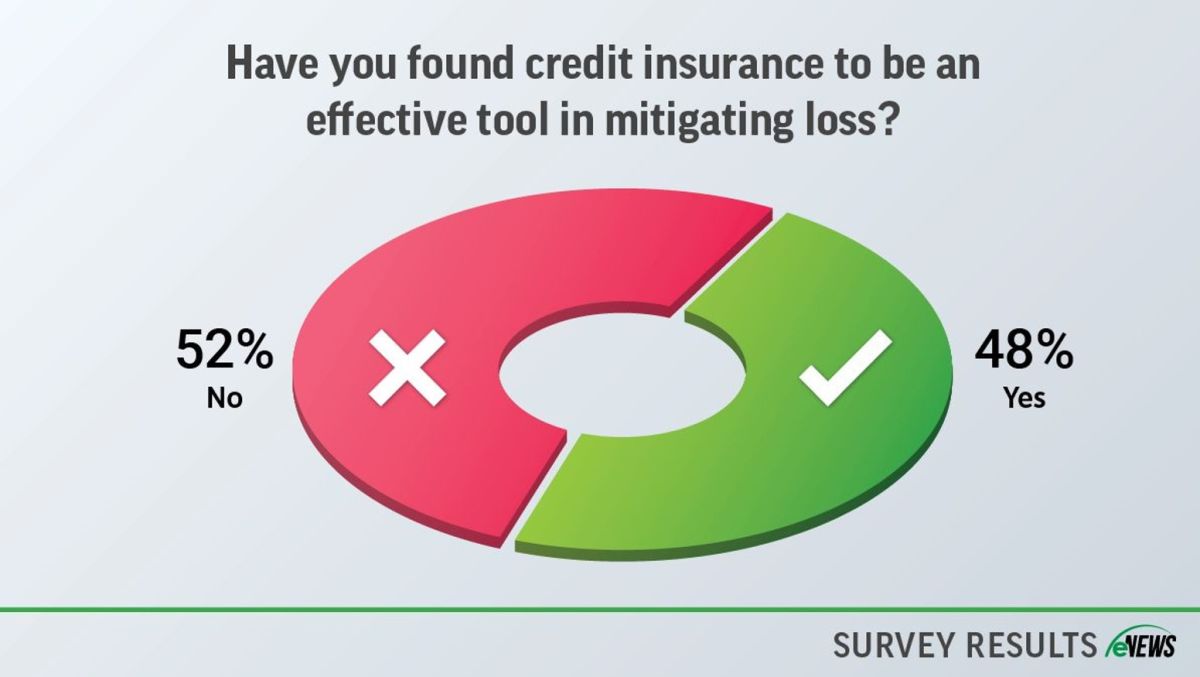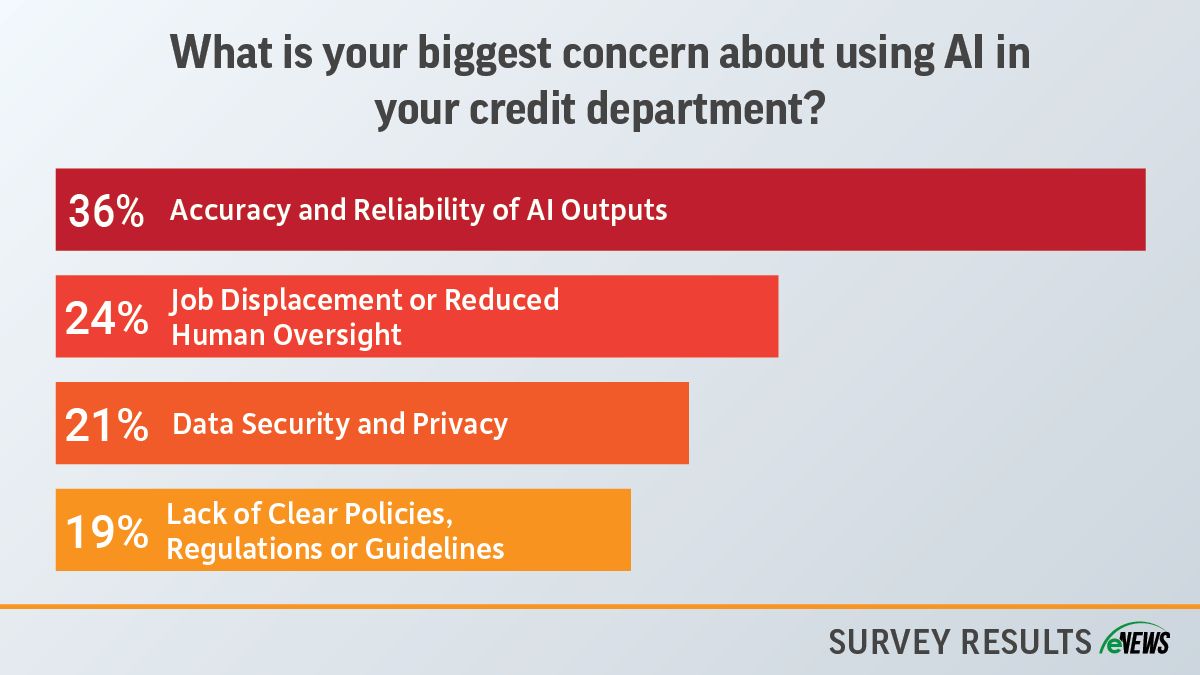Credit Managers’ Index (CMI), eNews, Uncategorized
To insure, or not to insure—that is the question

Credit managers are facing new challenges, as economic uncertainty, material shortages and the ever-looming threat of tariffs have stifled customers’ buying power, making it more difficult to predict and mitigate risk. With unpredictability in the market, it can be difficult for credit managers to fully gauge the degree of risk incurred with each transaction.
Why it matters: As the business credit environment becomes increasingly uncertain, credit managers may seek out risk mitigation tools to protect their companies from losses. For some credit managers, credit insurance may be a viable option to protect their portfolios from losses, but there is a lot to consider before taking this step.
By the numbers: According to an eNews poll, 48% of credit managers have found credit insurance to be effective as a risk mitigation tool. The decision of whether to purchase credit insurance is shaped by the current ambiguous business environment and the strain it would place on a company’s budget.
There is inherent risk in all transactions because there is the chance of not being paid what is owed, and risk increases as purchase orders grow larger. Credit insurance can help minimize the impact of these losses by covering a portion or entirety of the amount lost, depending on the exact policy you hold.
Many credit professionals may only feel the need to insure a portion of their company’s portfolio. Whether you are wary of some international accounts amid the brewing trade war or feel the need to watch small businesses a little more closely, you can opt to insure certain transactions.
No two credit insurance policies will look the same, as they are uniquely tailored to suit the needs of each individual company. Making the most of credit insurance comes down to building a policy that meets your company’s specific goals, and as the credit manager, you are tasked with understanding which areas of your customer base are most vulnerable and susceptible to risk.
“A well-structured policy is going to cover what you want to cover and it’s not going to cover the customers you have minimal concerns about,” said Jay Tenney, managing director at Trade Risk Group (Irving, TX). “Working directly with a broker will help you put together a policy that meets the needs of the policyholder. You might have a policy where a company does not want to insure any buyers under $100,000 in exposure, while another says they’re really concerned about smaller buyers because an economic event could lead to death by 1,000 paper cuts.”
The first thing to consider is whether you would like to work with an insurance agent from an insurance company or a broker who will take you on as a client. One key difference between the two is that a broker will take into account your individual needs and find policies that suit each aspect of your portfolio that you are looking to cover, often using multiple insurance companies.
“A direct agent only represents one insurance company, so they’re an employee of that company,” Tenney said. “Whereas a broker can go to every insurance company when building your policy, and there’s no added cost.”
Tariffs and supply chain restructuring and relocation are creating a tremendous amount of uncertainty in global trade flows. “Supplier networks are changing and will continue to change as tariffs and trade agreements are negotiated. In this environment, it is impossible for any company doing business internationally to predict their future relationship with their suppliers or how their customers will be impacted. Trade credit insurance is certainly an option to mitigate the risk of shifting supplier and customer relationships,” said Ron Shepherd, CICP, director of membership at FCIB (Portland, OR).
Additionally, credit insurance can help your company safely expand the scope of its business. “One reason for credit insurance is it allows companies to be more flexible with the payment terms or credit limits offered to customers. First and foremost, credit insurance is a sales tool, the benefit is you also get risk mitigation in the process,” said Mark Regenhardt, managing director at Marsh (Chicago, IL). “It’s just another tool in the credit manager’s toolbox. The more flexible you can be with your terms of credit the more sales you are generally able to make.”
Having credit insurance provides the insured with an additional source of information on risk, whether it is related to a certain international market or customer. “Credit insurance allowed our company to extend open account credit resulting in larger orders,” Joy Krugel, credit manager, (Sheboygan Falls, WI) said. “We were able to increase sales over time because we could increase credit limits. It allowed for higher risk tolerances, helping us expand sales in different areas and markets. The reason for this was that our provider was able to offer expertise in risk related to countries and customers we were working with.”
Credit insurers provide credit managers with an extra pair of eyes, which is becoming more and more valuable as gauging and analyzing risk becomes more complicated by market instability.
Despite its value as a risk mitigation tool, only a fraction of credit departments use credit insurance. “The issue for whether a company wants credit insurance or not depends on their prior experience with it, their overall budget and their assessment of risk in the current business environment,” Shepherd said. “And the current business environment is a risky one.”
The bottom line: As the markets lose stability and the economy becomes unpredictable, many credit departments may be looking for ways to protect themselves from major losses. While credit insurance is a viable option for credit departments looking to minimize risk, credit managers must have the foresight to employ these tools before suffering any major losses.





